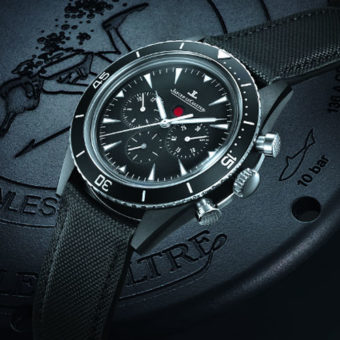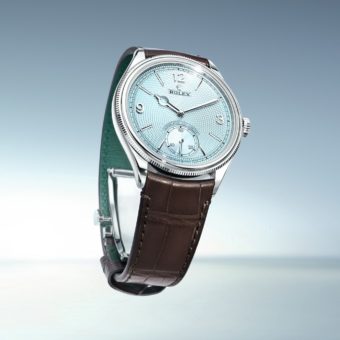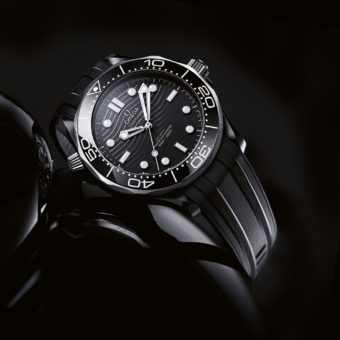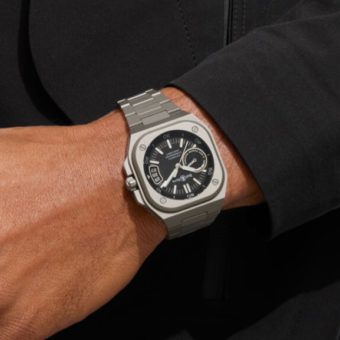Earlier this year we covered the new IWC Big Pilot’s Heritage Watch, a special-edition piece of IWC’s Big Pilot Watch meant to harken back to the original designs of the B-Uhr (Beobachtungs-Uhren, or observation watch) style first developed in 1940s Germany. However, of the five original manufacturers who produced the B-Uhr design more than 77 years ago — other than IWC — only Stowa and Laco have also continued to produce the style for the modern market. Coincidentally, 2017 marks 90 years of uninterrupted production for Stowa, and to commemorate this accomplishment the German brand has released 13 new historically inspired pilots’ models, limited to 90 pieces each, many of which draw direct influence from those original B-Uhr designs.
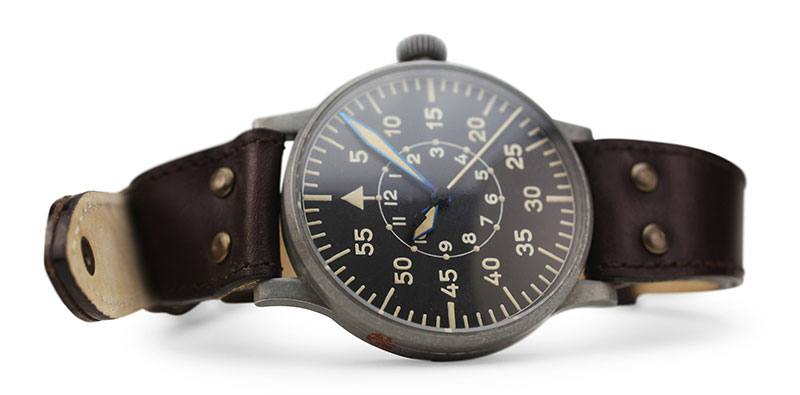
These watches includes the Flieger Klassik 40 Baumuster B (Flieger is German for “pilot”). This watch is named for the Baumuster B design of the B-Uhr watches (pictured above), known for its complex dial with a smaller inner ring denoting the hour from 1 o’clock to 12 o’clock and a larger outer ring displaying minutes from 5 to 55. The Baumuster B design — first seen in 1942, two years after Stowa’s first production of the original and simpler Baumuster A (pictured below) — is more often associated with modern pilot watches and is commonly seen in today’s homage designs, notwithstanding Stowa’s latest anniversary collection.
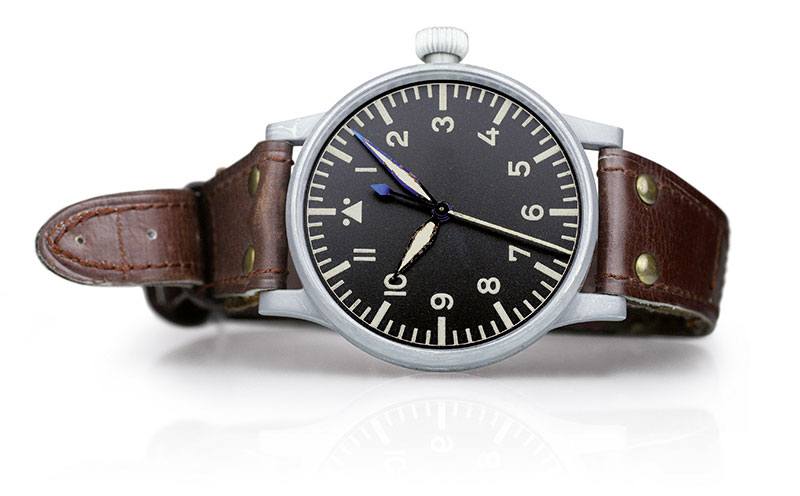
This take on the style is a 40-mm steel-cased piece with an onion crown. It’s a watch that, like many other “homage” pilots’ models, works to channel its historical past while simultaneously adding a few layers of modernity. On its black dial, you’ll notice the traditional Baumuster B design in the inner and outer sections of the dial; the triangle at the 12 o’clock position; and the blued, sword-shaped hour and minute hands displaying the time. The only changes to the historical Baumuster B dial style are the faux-patina “old radium” coloring on the watch’s accents (as compared to the same clean, white accents that watches were produced with in the 1940s as they are for the most part today) and the addition of a circular date window at the 6 o’clock position.
As for the movement, Stowa provides prospective buyers both a hand-wound and self-winding (automatic) option. The latter version (below) uses an ETA 2824-2, capable of a 40-hour power reserve and offering a central hacking mechanism, which stops the seconds hand from moving when the crown is removed to provide better accuracy while adjusting the time. The manual-winding model contains an ETA 2804-2, with a 42-hour power reserve. Both watches’ movements are visible through a sapphire caseback. The watch is currently available in boutiques and directly from Stowa, with the automatic version priced by the brand at 941 euros, or about $1,078, and the hand-wound version priced at 958 euros, or about $1,097. The watch is available on either a brown leather strap or a metal bracelet and is limited to 90 pieces for each movement type.
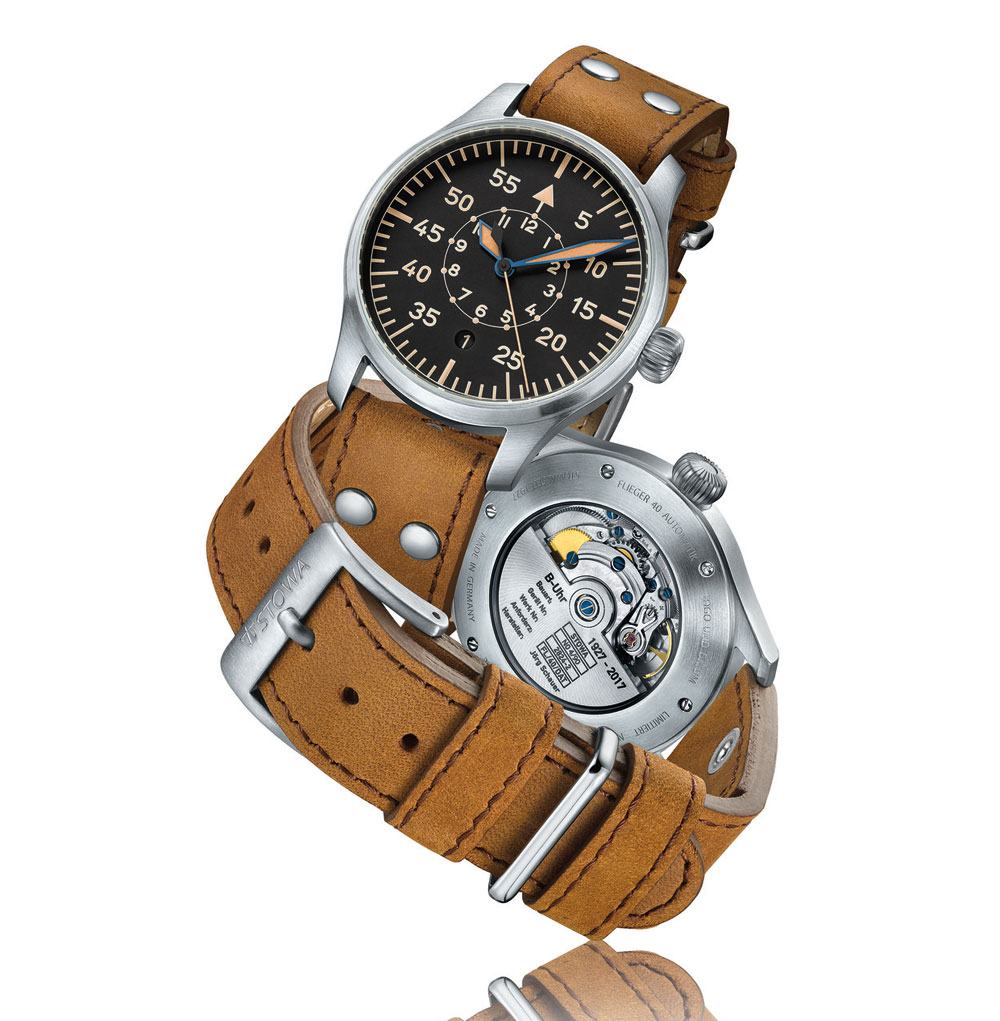
The similarities between the modern watch and the vintage original include the shape of the case, the onion crown, the style of leather bracelet, and, of course, the Baumuster B design of the dial, which has been re-created marker by marker, numeral by numeral. The bloodline of the B-Uhr Baumuster B style is clearly channeled through this piece.
As for the differences, the crown is now closer to the case (as compared to the more extended placement of the historical piece), and the case is clearly of a sturdier construction and higher quality finishing — a perk that comes with decades of non-military, luxury-grade manufacturing. As mentioned above, the modern dial features a subtle date window at the 6 o’clock mark, a faux patina has been added to replicate the aging of the original dial, and the modern movement is now displayed through a sapphire caseback rather than hidden behind a solid one, as was the historical movement. Also of note, the original Baumuster B was both significantly larger — at 55 mm in diameter — and came in a very limited-production series, with only forty-two pieces built. In comparison, the modern interpretation comes in at 40 mm in diameter, with a slightly larger production (90 pieces of each version, as mentioned).

In summation, regardless of its level of historical accuracy, this is a handsome watch and represents a great value, especially when compared to the significantly more expensive IWC Big Pilot options. I think that as an homage series, the design would have benefited from a solid caseback — a feature that is, admittedly, not at all common within Stowa’s modern collection — an extended crown, and a larger, more period-accurate 55-mm version. All of these features could have garnered the piece a bit more historical flair, and likely would have garnered the anniversary collection as a whole more attention from the press. Overall, however, Stowa has produced a solid and affordably priced timepiece, and seems to be slowly but surely working to better capitalize on its very real history in the world of pilots’ watches.
For our last article in which we cover the Tissot Heritage 1948 Chronograph to its vintage predecessors, click here. Photo above courtesy of Fratello Watches; for their hands-on review of the Stowa Flieger Klassik 40 Anniversary watch, click here.
Caleb Anderson is a freelance writer with a primary focus on vintage watches. Since first learning about horology, he has garnered extensive knowledge in the field, and spends much of his time sharing his opinions among other writers, collectors, and dealers. Currently located near New York City, he is a persistent student in all things historical, a writer on many topics, and a casual runner.

